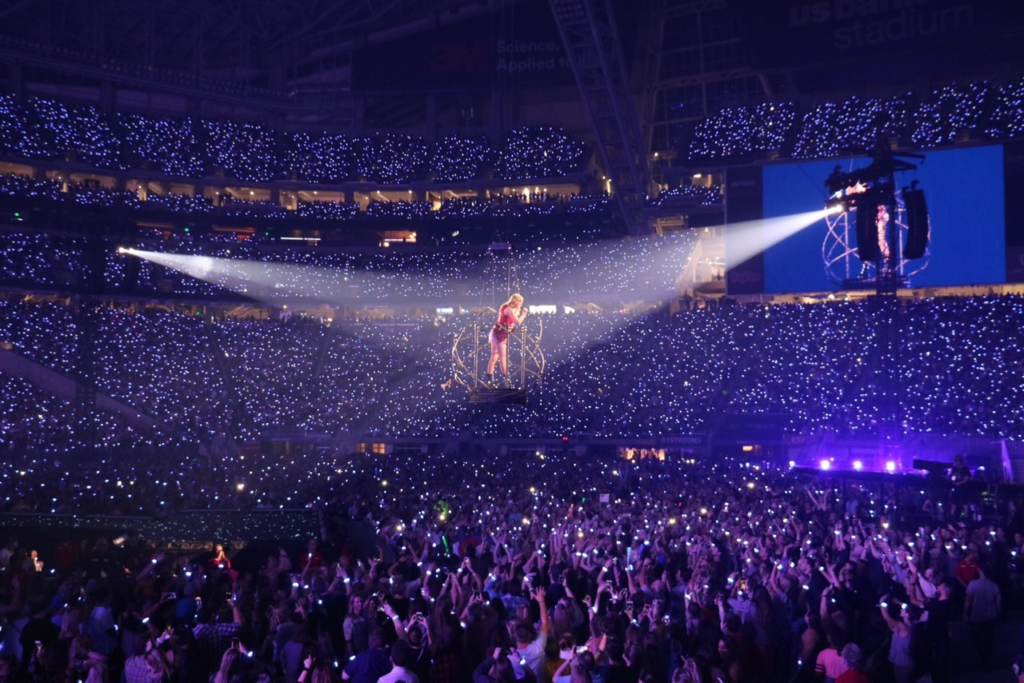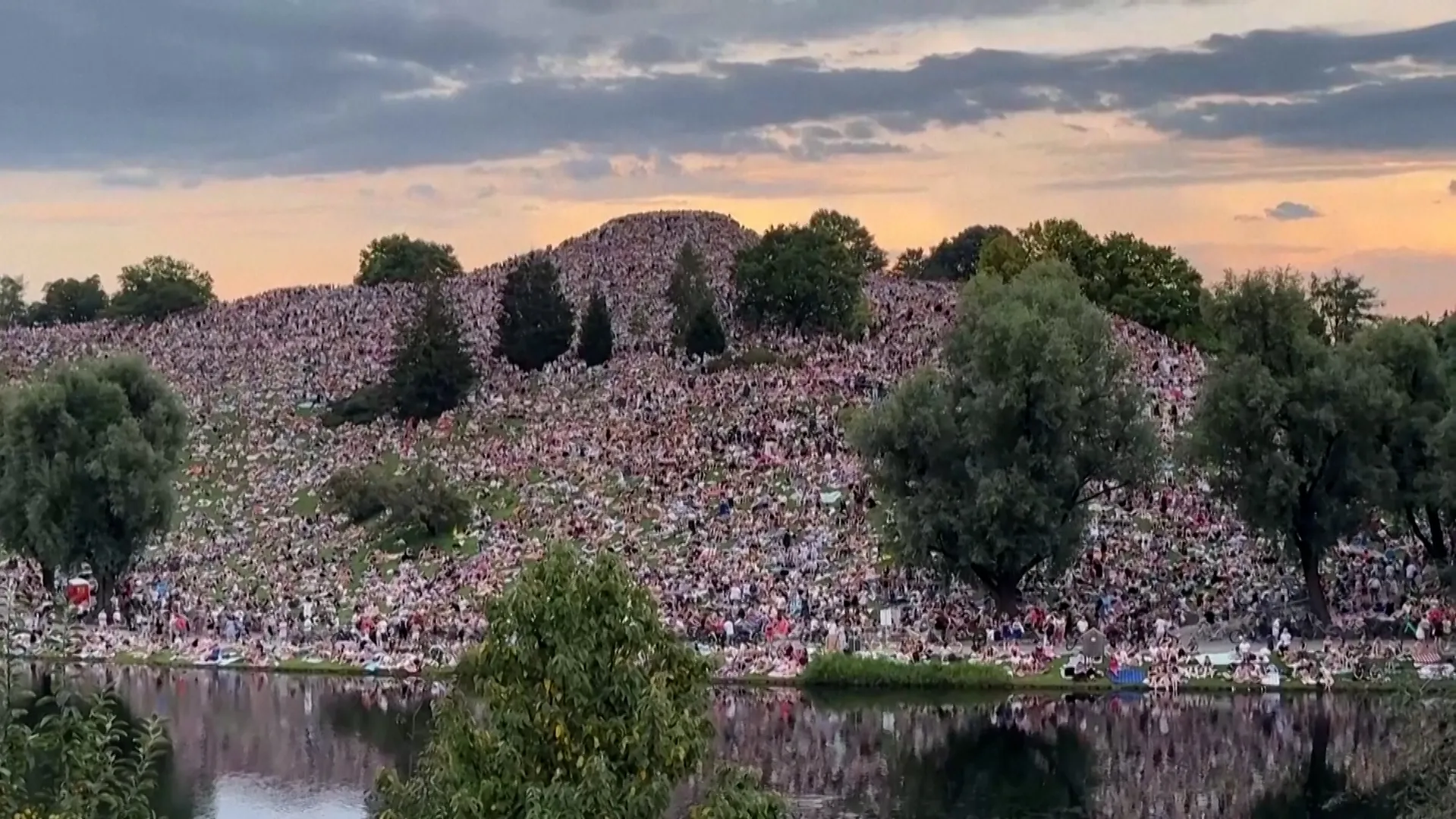The world of live music is often punctuated by record-breaking events that capture the imagination of fans and the media alike. Concerts have the power to bring together vast numbers of people, creating unforgettable experiences that resonate long after the final note fades away.
Recently, Indian singer Diljit Dosanjh made headlines with his concert in Delhi, drawing a crowd of 35,000 enthusiastic fans. However, in the grand scheme of concert history, this figure is dwarfed by the largest concerts ever held, which saw attendance numbers soaring to 35 lakh.
Notably, these monumental gatherings featured legendary performers who aren’t typically associated with the modern music icons like Michael Jackson or Taylor Swift. Let’s delve into the details of these remarkable events that have shaped the concert landscape over the decades.
The Historic Concerts of the Past
In December 1994, a momentous event unfolded at Rio de Janeiro’s Copacabana Beach, which would etch itself into the annals of music history.
As part of the New Year’s Eve celebrations, British rock icon Rod Stewart took to the stage, attracting an astonishing crowd of 35 lakh people.
The allure of the event lay not only in Stewart’s magnetic performance but also in the unique setting and the carnival-like atmosphere that characterizes Rio’s beach festivities. This was a free concert, allowing anyone to join the revelry, leading to one of the largest gatherings for a music event ever recorded.
What made this concert particularly special was the backdrop of Copacabana Beach, a location known for its vibrant energy and cultural significance.

With the stunning ocean as a backdrop and the excitement of the New Year, attendees experienced a once-in-a-lifetime event that was more than just a concert—it was a celebration of life, music, and togetherness. The event exemplified how music can transcend barriers, uniting people from all walks of life in a shared experience.
Three years later, in 1997, French electronic music composer Jean-Michel Jarre matched this extraordinary attendance record during his performance in Moscow. Jarre’s concert, named “Oxygene,” took place in front of the iconic Moscow State University.
As with Stewart’s concert, this was a free event, drawing a massive crowd eager to experience his innovative soundscapes and mesmerizing visuals. The blend of technology and music that Jarre provided captivated attendees, leading to another record-breaking night in concert history.
Both concerts remain etched in memory as benchmarks for crowd size and the power of live music, setting the stage for future events to aspire to.
While these performances were monumental, they also raise questions about what it takes to draw such huge audiences and how accessibility plays a crucial role in gathering crowds.
The Evolution of Concerts: From Free Events to Ticketed Spectacles
While the largest concerts have often been free, the world of ticketed concerts tells a different story. Ticketed events can still attract impressive crowds, but attendance numbers rarely reach the staggering heights seen in free concerts.
The largest ticketed concert ever held was by Italian singer Vasco Rossi, who performed at Modena Park in 2017. This concert drew approximately 2.25 lakh fans, showcasing the immense popularity of the artist and the draw of live performances in a more structured setting.
Read : Taylor Swift Concerts Cause Earthquake-Like Activity in Scotland: Fans Literally Rock the Ground
In India, the largest ticketed concerts have featured artists like Justin Bieber, who performed in Mumbai in 2021, and Diljit Dosanjh, whose recent Delhi concert saw attendance figures peak at around 50,000. These numbers, while significantly lower than the record-breaking free concerts, still illustrate the potential for large crowds in a ticketed format.
The shift from free to ticketed events reflects changes in the music industry, where artists and promoters seek to create exclusive experiences. While free concerts can accommodate vast crowds, ticketed events often provide a more controlled environment, enhancing the overall experience for attendees.
Read : Donald Trump Says, “I Hate Taylor Swift”
However, this also leads to limitations, as ticket prices can be a barrier for some fans, affecting the demographic diversity of concert-goers.
Iconic Performers and Their Impact on Concert Attendance
The success of these record-breaking concerts often hinges on the performers themselves, their ability to connect with audiences, and their cultural significance.
Rod Stewart and Jean-Michel Jarre, for instance, are known for their unique styles and innovative approaches to live performances. Stewart’s charismatic stage presence and Jarre’s pioneering use of technology in music are key factors that have contributed to their popularity.
In contemporary music, artists like Taylor Swift and Michael Jackson have also made significant impacts, but their concert attendance figures pale in comparison to the massive gatherings of the past. While Swift’s tours consistently attract large crowds, they typically do not reach the scale of the largest free concerts in history.
This raises an interesting point: how do modern artists balance the demands of ticket sales with the desire to create accessible and inclusive experiences for their fans?
The power of nostalgia and cultural significance plays a crucial role in drawing crowds. The events held by Stewart and Jarre were not just concerts; they were cultural phenomena, embedded in the collective memory of those who attended.
Today’s artists can learn from these historical events, recognizing that while ticket sales are essential, creating an inclusive atmosphere and fostering a sense of community can elevate their concerts to legendary status.

The music industry is a dynamic realm, constantly evolving with trends, technologies, and audience expectations. Diljit Dosanjh’s recent concert in Delhi showcased his popularity and the vibrant Indian music scene, drawing an impressive crowd of 35,000.
Yet, as we look back at history, we find that the largest concerts ever held were on an entirely different scale, attracting audiences that numbered in the millions. Rod Stewart and Jean-Michel Jarre’s record-breaking performances serve as a reminder of the unparalleled power of music to bring people together, regardless of barriers.
As the concert landscape continues to evolve, modern artists must navigate the delicate balance between commercial viability and creating inclusive experiences. While ticketed concerts may dominate the scene today, the monumental free concerts of the past remind us of the magic that can happen when music transcends monetary barriers.
These legendary events will forever hold a place in music history, challenging today’s artists to think beyond the numbers and aspire to create unforgettable moments that resonate with fans for generations to come.
let’s enjoy few years on earth with peace and happiness….✍🏼🙏

